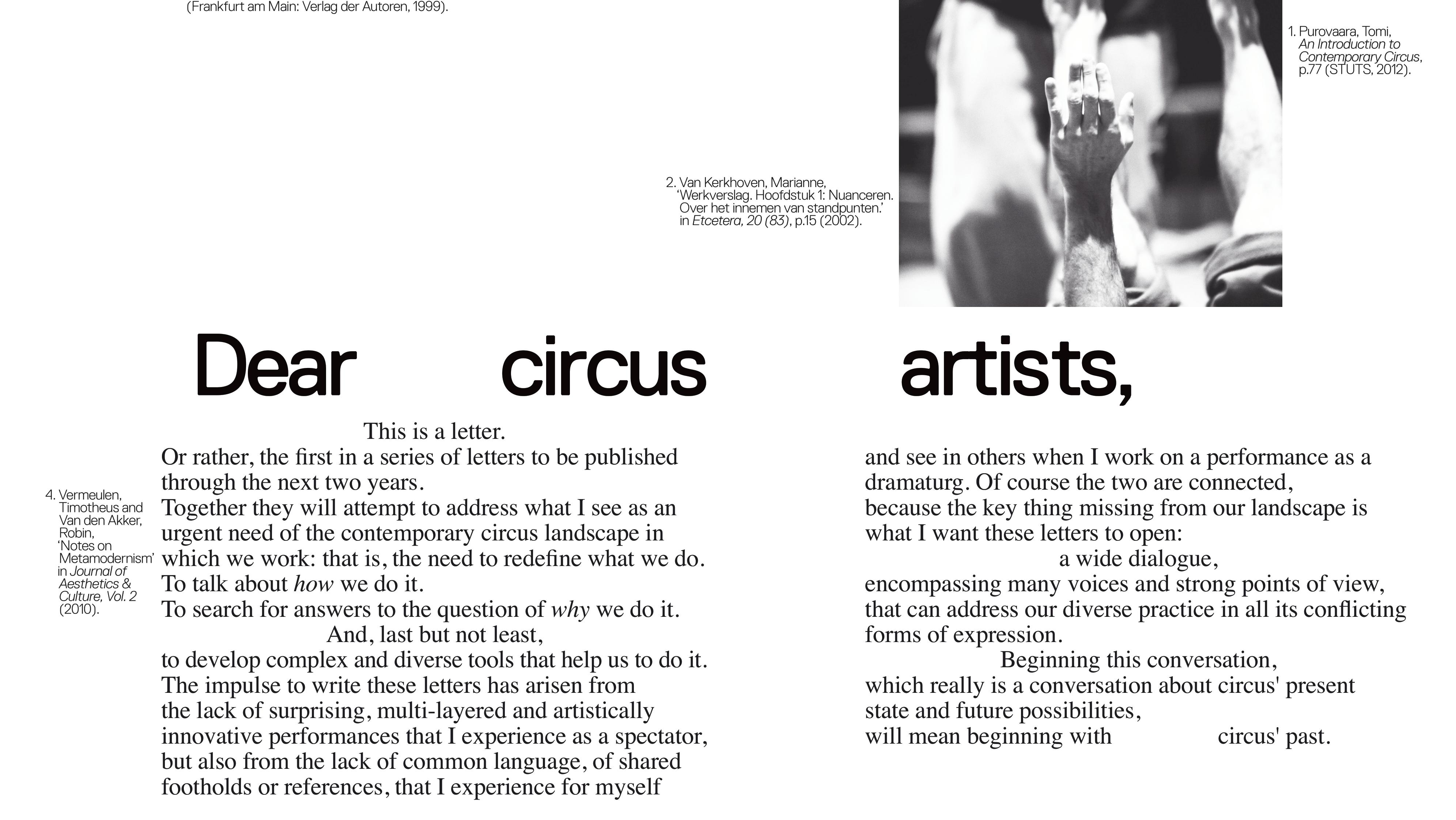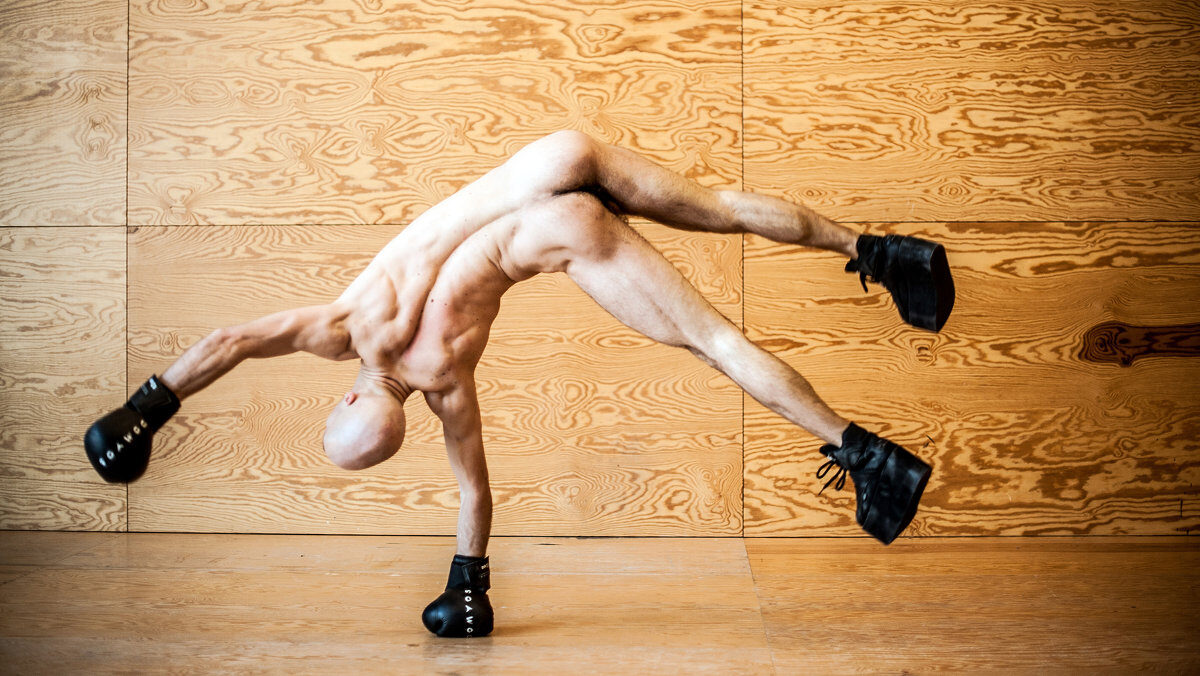Three Frames for Circus
So the first question was, What is circus?, and for me I think the fact that we keep asking ourselves this question points to the multiplicity of the thing circus is. So I would like to look through three frames: one more material/sociological; one more aesthetic; and one more subjective.
And I think the ways these things intersect are the keys to producing a way of thinking about circus that’s more multifaceted or more about the multiplicity that it is, and less about a kind of ‘essence’.
So the thing we often ignore is the way circus manifests itself materially in the world, in institutions, different shows, different legal and funding structures, and so on. The community is dispersed in a way that carves channels between strange countries – there’s this kind of connection between Barcelona and Scandinavia, or between France and Montreal – and yet there’s a more or less continuous culture in these different contexts but one that has different local flavours.
I think this is something we tend to ignore when thinking aesthetically about circus but this is also what circus is, and this is also maybe what we’re trying to recuperate when we’re trying to articulate better what circus is as an artistic language.
So this is the sort of network that gets lost if we start positioning ourselves as dance, performance, or non-circus; the access to this network is cut off. And of course there’s this relation also to traditional circus, which is mediated by this network of contemporary circus – both in terms of history and lineage, and in terms of our access to it now. When I go and see traditional circus the lens that I view it through is not only some kind of abstract conceptual idea of what circus is but also it’s the lens of my own cultural immersion in circus.
So from the perspective of aesthetics we might say circus is a particular kind of staged action. I’m sort of against the idea of circus as a medium because I think very clearly when we look at the materiality of circus it’s not different from the materiality of dance or performance in the sense that it’s bodies and objects on stage in configurations.
So we can call it like a mode or an element or a flavour of performance, and I would hesitate to limit this mode or flavour or element to the existing disciplines because obviously that’s boring. And I would also hesitate to limit it to subject matter like risk because these kinds of subject matters for me are conveyed through the way circus is staged and not through sort of what it is. You have to indicate that what you are doing is risky in order for it to appear risky.
I also think that that kind of definition acts as a normalising mechanism – so it acts as a way we can evaluate something as circus or not circus. I think it’s really important that we find a definition that acts as a lens through which we can view anything as circus.
So I would like to propose circus as a performance where the relation of a body and its environment is highlighted – so what you see is not the body necessarily or the object, but you see the way the body is related to it.
So in circus we see objects and environments transformed by their relationship to bodies, and bodies transformed by their relationships to objects and environments, and the action is always passing though this relation in various ways and is located in various places – so attention is directed more towards the environment/object or the body, but always encompasses both.
This is the relationship that I think we can see between circus and any kind of action – because all action takes place somewhere, and with some thing, and with other people. All action takes place within this relationality, and every time an event occurs it occurs between bodies and objects and elements. If my body is in a vacuum I have no access to any action, and technique of course is learned ways of relating to objects or environments – so it’s everything that surpasses the biological or instinctive So I would include language in technique. I would include different sorts of cultural codes, like politeness, as technique.
And I think that’s where we can see the ways circus could potentially mediate any kind of content – because it’s in the embeddedness of bodies and the relationality of bodies that circus finds its work.
So in some sense I would say that technique is totally impersonal. It’s the ability of a certain way of relating to objects to be shared. So it’s like the codification, the procedural aspect, of the ways bodies relate to environments.
So in terms of aesthetics circus is a performance which asks the spectator to think through the body’s technical entanglement with its environment.
And then I think on a subjective level circus is a daily practice, which for me is a way of caring for the self. So that implies a certain ethics: the way that our daily practices are structured is always a political gesture because it’s a way of managing bodies. I think we really need to think of our techniques as commitments to bodies, and think about the way that falls on a continuum of care and neglect.
In terms of my practice I think to date my practice has been sort of negotiating the conflicts that arise between my ethical commitments and my theoretical commitments to circus as a practice and as an aesthetics, and the kind of pressures that arise from this sociological network, which is why I’m more involved in theory at the moment. Because I think being able to articulate my sort of ethical and aesthetic commitments which for me began as instinctive is important to beginning to help this network be sensitive to those issues.
And in terms of study practice I’m really interested in disorganising circus techniques as a way of sort of working through what it could be, what care of the self could be in a technical context and the way that can be useful for artistic expression.










